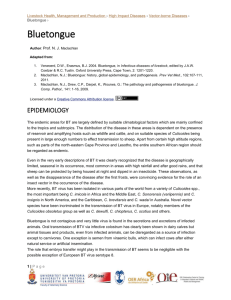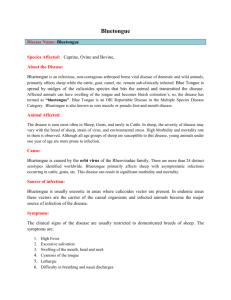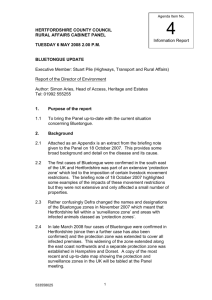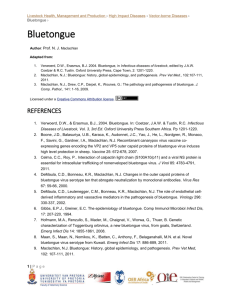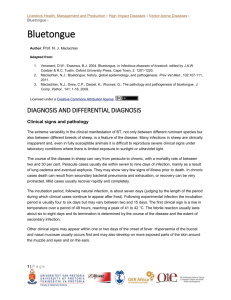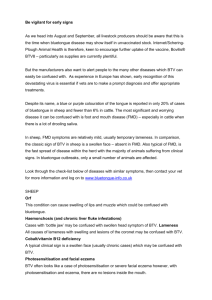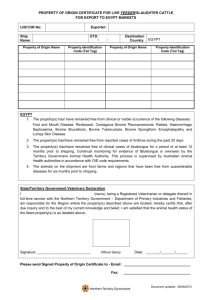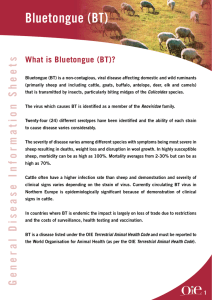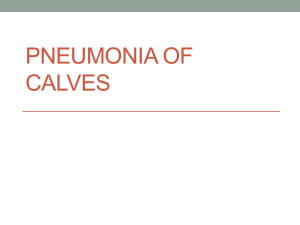bluetongue_3_pathogenesis
advertisement
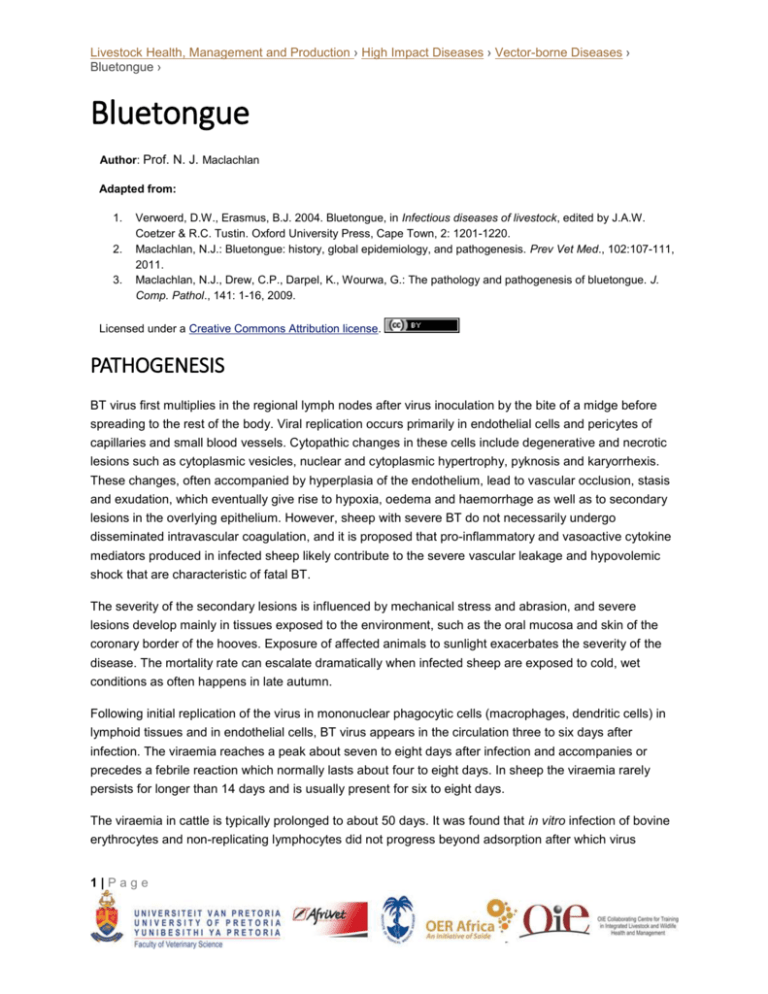
Livestock Health, Management and Production › High Impact Diseases › Vector-borne Diseases › Bluetongue › Bluetongue Author: Prof. N. J. Maclachlan Adapted from: 1. 2. 3. Verwoerd, D.W., Erasmus, B.J. 2004. Bluetongue, in Infectious diseases of livestock, edited by J.A.W. Coetzer & R.C. Tustin. Oxford University Press, Cape Town, 2: 1201-1220. Maclachlan, N.J.: Bluetongue: history, global epidemiology, and pathogenesis. Prev Vet Med., 102:107-111, 2011. Maclachlan, N.J., Drew, C.P., Darpel, K., Wourwa, G.: The pathology and pathogenesis of bluetongue. J. Comp. Pathol., 141: 1-16, 2009. Licensed under a Creative Commons Attribution license. PATHOGENESIS BT virus first multiplies in the regional lymph nodes after virus inoculation by the bite of a midge before spreading to the rest of the body. Viral replication occurs primarily in endothelial cells and pericytes of capillaries and small blood vessels. Cytopathic changes in these cells include degenerative and necrotic lesions such as cytoplasmic vesicles, nuclear and cytoplasmic hypertrophy, pyknosis and karyorrhexis. These changes, often accompanied by hyperplasia of the endothelium, lead to vascular occlusion, stasis and exudation, which eventually give rise to hypoxia, oedema and haemorrhage as well as to secondary lesions in the overlying epithelium. However, sheep with severe BT do not necessarily undergo disseminated intravascular coagulation, and it is proposed that pro-inflammatory and vasoactive cytokine mediators produced in infected sheep likely contribute to the severe vascular leakage and hypovolemic shock that are characteristic of fatal BT. The severity of the secondary lesions is influenced by mechanical stress and abrasion, and severe lesions develop mainly in tissues exposed to the environment, such as the oral mucosa and skin of the coronary border of the hooves. Exposure of affected animals to sunlight exacerbates the severity of the disease. The mortality rate can escalate dramatically when infected sheep are exposed to cold, wet conditions as often happens in late autumn. Following initial replication of the virus in mononuclear phagocytic cells (macrophages, dendritic cells) in lymphoid tissues and in endothelial cells, BT virus appears in the circulation three to six days after infection. The viraemia reaches a peak about seven to eight days after infection and accompanies or precedes a febrile reaction which normally lasts about four to eight days. In sheep the viraemia rarely persists for longer than 14 days and is usually present for six to eight days. The viraemia in cattle is typically prolonged to about 50 days. It was found that in vitro infection of bovine erythrocytes and non-replicating lymphocytes did not progress beyond adsorption after which virus 1|Page Livestock Health, Management and Production › High Impact Diseases › Vector-borne Diseases › Bluetongue › particles persisted in invaginations of the cell membrane. This could explain both the prolonged viraemia and the absence of clinical disease. Bluetongue virus in the blood is primarily associated with erythrocytes and, to a lesser extent, with the buffy-coat fraction, while only a small fraction is found free in the plasma. Panleukopaenia preceding the viraemia and febrile reaction is consistently found in BT, possibly as a result of viral replication in leukocytes or in the stem cells of the haemopoietic system. Abortion or malformation, particularly of the central nervous system (CNS), of lambs may follow vaccination of ewes with attenuated live vaccines during the first half of pregnancy. Similarly, infection of bovine foetuses during the first trimester of pregnancy with laboratory-modified strains of BT virus results in severe CNS abnormalities. These teratogenic features were notable during the BT virus serotype 8 epidemic in Europe. 2|Page
